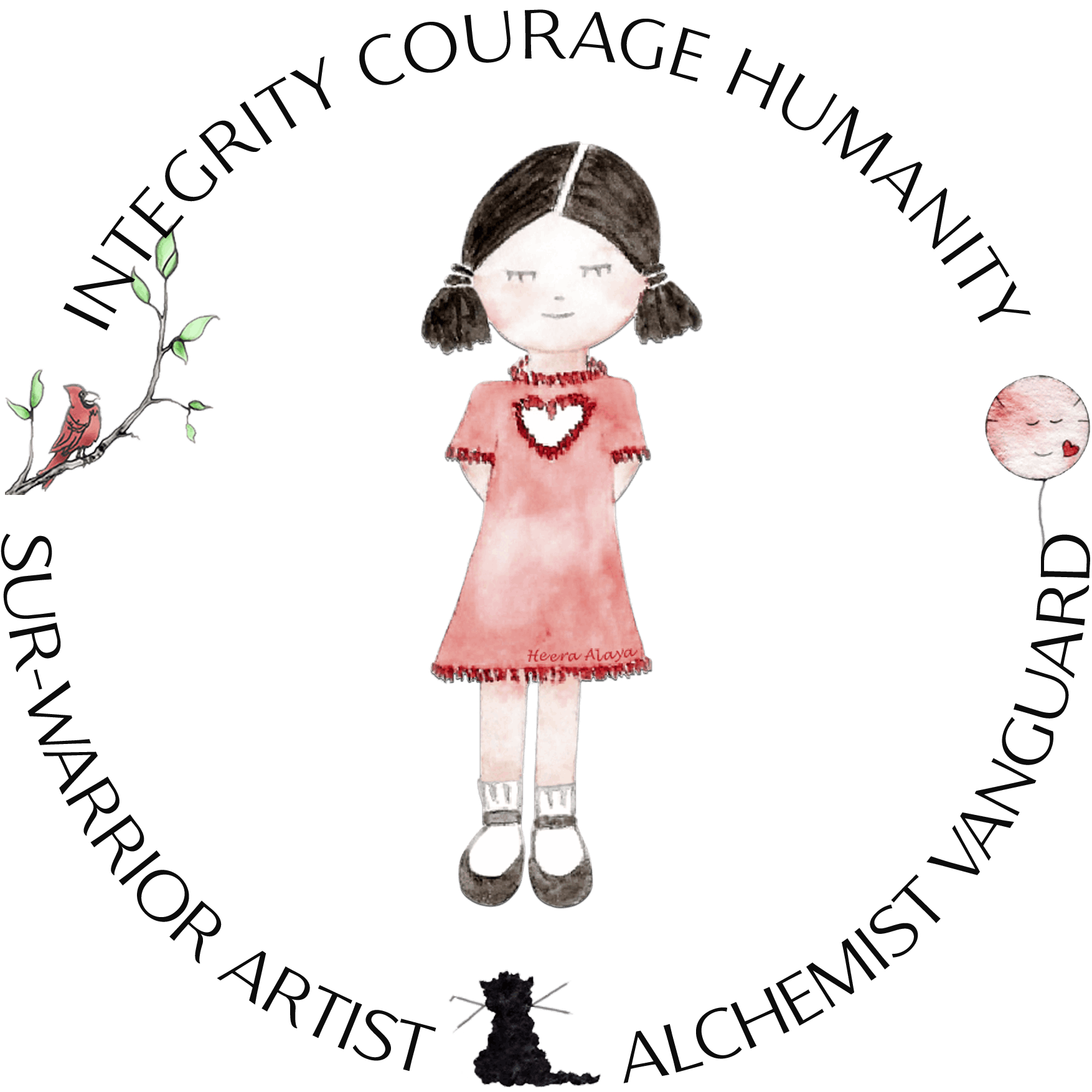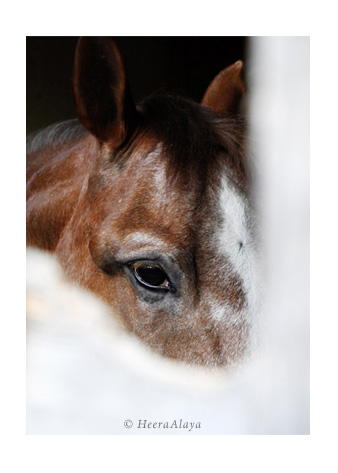
“When humans treat other animals
with cruelty, it dehumanises us,
and we start rationalising violence.”
GENE BAUR
President and Co-Founder, Farm Sanctuary, USA
September 26th, 2017
OPEN WINDOWS | In Conversation
Animal rights activist Gene Baur is the co-founder and president of Farm Sanctuary, USA, an animal protection organisation that rescues and provides a burgeoning haven for animals. A vegan advocate, Mr Baur, through his education and advocacy, encourages us to make ethical decisions, embrace a compassionate way of living and alter our palette to sensitivity. Gene Baur has authored two books: Living the Farm Sanctuary Life: The Ultimate Guide to Eating Mindfully, Living Longer, and Feeling Better Every Day and Farm Sanctuary: Changing Hearts and Minds About Animals and Food.
FARM SANCTUARY, EDUCATION AND ADVOCACY
Heera Alaya: Can you tell me about Hilda the sheep and how you came to start the Farm Sanctuary?
Gene Baur: Farm Sanctuary started in 1986 with the idea that we wanted to investigate and expose factory farming. We thought if people saw factory farming, they wouldn’t want to support it; it’s partially true, but it’s more complicated. People are creatures of habit, so we also need to create systems for people to have alternatives and start choosing plants instead of animals for what they eat. One of the fundamental things we have done over the years is to demonstrate that farm animals are not different from cats and dogs.
We started by rescuing animals, and Hilda, the sheep, was the first to be rescued. We took Hilda off a dead pile in a stockyard and brought her to the veterinarian, thinking she would have to be euthanised. As the veterinarian started examining her, Hilda perked and stood up. Hilda lived with us for more than ten years.
The story of Hilda, the sheep, is one of recovery, healing, and redemption. Hilda’s story speaks more broadly to what human beings seek: to live well, be forgiven, and learn from our mistakes to improve our lives and live meaningfully.
By rescuing animals and watching them heal, we heal.
At Farm Sanctuary, animals are our friends, and veganism is normal. Here [Farm Sanctuary], people can pet sheep (who will paw when you stop) and look into the eyes of pigs, give them a belly rub and commune with them. These animals are not different from us — they want to be loved like humans. Treating animals cruelly, with disregard and disrespect, says a lot about us. At Farm Sanctuary, we want to change how our society views and treats farm animals. We must recognise that our humanity means treating others with kindness.
Farm Sanctuary inspires and empowers people. It provides a model for how we can live with other animals and realize that interactions between humans and animals are mutually beneficial.
What made you select the Finger Lakes region for your first shelter?
For our first couple of years, Farm Sanctuary never owned anything—we operated from donated spaces—we started in a row house in Wilmington, Delaware. Then, a farmer let us use his land in Pennsylvania.
When we needed a bigger space, I started looking at real estate sections in farming newspapers and came across inexpensive land for sale in the Finger Lakes region of New York. I also saw an advertisement for a 175-acre farm with a seven-bedroom house, barns, tractors, and equipment; they asked for 110,000 dollars (US dollars). We offered 95 thousand dollars and got it for 100,000 thousand dollars. We did a walk for animals to raise 25 thousand dollars for a down payment, purchased the farm and then paid off the mortgage.
Also, Finger Lakes had a growing tourism business, which would serve us well in attracting visitors to our sanctuary. Some dairy farms were going out of business, and providing an example of something different would benefit the local economy. Now, we have become one of the larger employers in that part of New York State.
How did you come to set up your subsequent shelters in California?
In the 90s, one of our members was interested in setting up a sanctuary in California. She [the member] donated land to us in Orland, Northern California. Then, an opportunity came up some years later—a sanctuary near Los Angeles was having difficulties, and the board of directors came to us and asked us if we could take it over. We always wanted to be in bigger urban areas to reach larger audiences, so we went ahead with the shelter in Los Angeles.
We are now partnering with Jon and Tracey Stewart [Jon is an American television personality, and his wife, Tracey, is an animal advocate] to open a similar sanctuary in New Jersey, not far from New York City.
How has Farm Sanctuary evolved over the years?
We started by conducting investigations of factory farms, rescuing animals, and telling their stories while modelling a mutually beneficial relationship with the farm animals. Now, we seek to reach people in larger markets like New York and LA, for example, to encourage people to change their food choices. Most people are unwittingly supporting this brutal food industry through their food choices. We want to educate people and encourage them to realise the profound impact of their daily food choices.
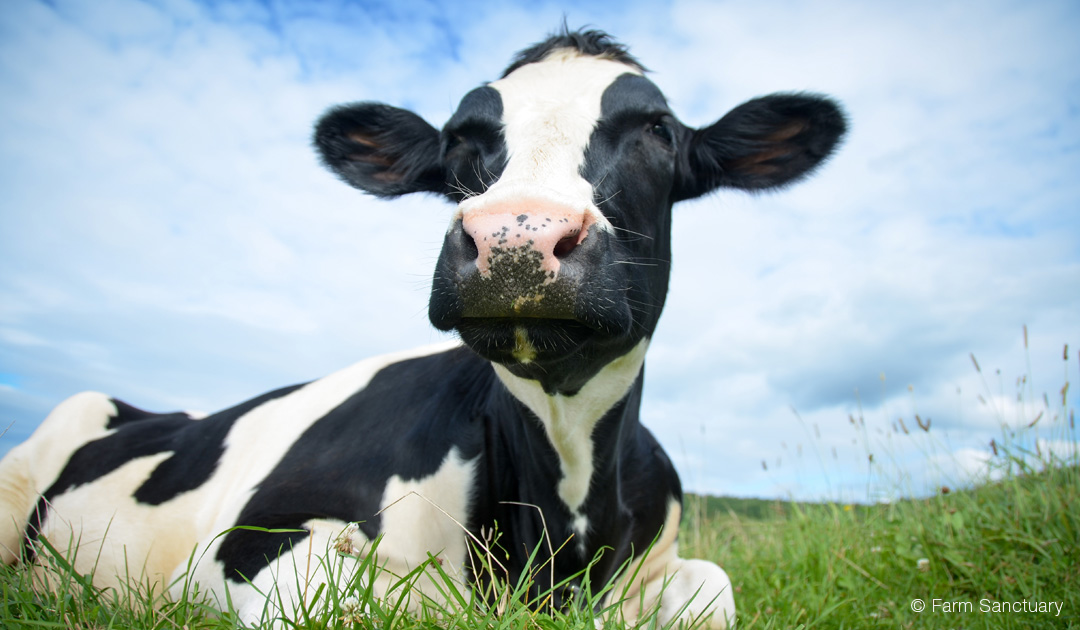
Are there times when you are unable to board an abused animal?
These are difficult situations for any sanctuary to deal with. Billions of animals are raised and slaughtered annually in the U.S. At Farm Sanctuary, we currently care for about a thousand animals; other sanctuaries also care for a small number relative to the billions. Even if we could rescue a million a year, it would be a drop in the bucket. You have to accept that you can’t save all the abused animals; you do your best and tell their stories as widely as you can.
We must figure out how to reach more people and inspire more people to eat plants instead of animals. Animal abuse is a people problem.
Do you partner with other sanctuaries?
Definitely. We have a network of adopters—people who have adopted from us, including other sanctuaries. We partner with other advocacy organisations with aligned interests, whether environmental groups, health groups or animal groups. Animal cruelty is a big issue that will require many parties to solve. We are interested in working with as many people as possible.
By naming the animals at the Farm Sanctuary, you dignify their being. How do you pick their names?
The first animal we rescued, Hilda, was named after our first intern volunteer, Hilda. The shelter staff is coming up with ways to name the rescued animals, like naming them after states or naming them after someone, our supporters, volunteers, or celebrities. The cat we rescued a few years ago was named Albert after Albert Einstein.
Do rescued animals reproduce at the Farm Sanctuary?
Too many animals need homes, so breeding and reproducing on the farm would take up limited space. We operate very much like a cat and dog shelter that is dealing with an overpopulation problem. So, we do not allow animals to reproduce. And it’s not that difficult because most males who come in are castrated. In the case of the birds, we wrap their eggs so they cannot incubate and hatch.
When animals come in pregnant, we allow them to give birth and raise their young. But generally speaking, we don’t have that many young animals unless they come in young.
Do you ever get attached to one animal more than the other?
That [getting attached] happens sometimes. When there are individuals you have spent a lot of time with, often very sick animals, you tend to bond more closely with them.
How do you integrate animal rescue with education and advocacy?
When we started, we often rescued downed animals—animals too sick to walk. In addition to caring for these animals, healing them and telling their stories, we worked on a legislative effort to outlaw the marketing of downed animals, who were being left for dead at stockyards or loaded on trucks and taken to slaughter. Telling their stories—juxtaposing compassion to relate to animals with violent reality—helped integrate why this policy had to be enacted.
By passing laws, we could limit some suffering and engage people, getting them to think about these issues. Often, people get involved in campaigns to ban confining animals in small cages, and as part of that process, they learn more about the issues, becoming vegetarian or vegan.
At Farm Sanctuary, we rescue animals, educate people, and advocate for reforms, whether they are legislative or market-based—primarily to change how people eat. And that’s an area where change is increasingly happening. So rescue, education, and advocacy go closely together, whereas when you work on laws alone, you usually achieve minimal changes.
Why is that?
The political process is conservative and tends to maintain the status quo, and the industry is invested and entrenched in Washington, D.C., and state capitals.
What makes animal agriculture powerful?
Animal agriculture is powerful because people buy its products, giving the industry money, and, in turn, investing in Washington, D.C., or state capitals. So, we have the best money the Government can buy.
As people buy more plant foods, the food industry sector will grow and become more financially impactful. Until then, animal agriculture will have a more significant influence in Washington.
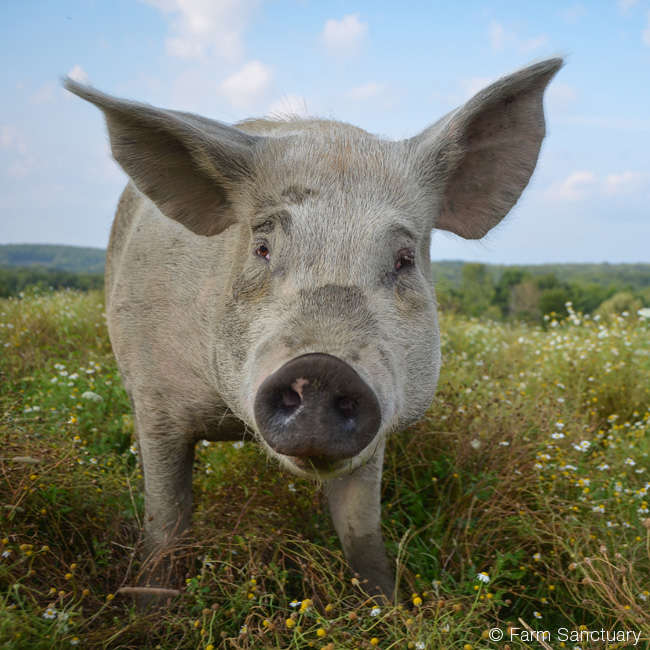
Why are farm animals perceived as devoid of feelings and emotions, which contradicts how they experience emotions and develop bonds?
Like all animals, farm animals have memories, develop relationships, and want to avoid pain and suffering. These animals want to enjoy and express themselves, which they cannot do on factory farms. On a few small farms, like Bob Comis’s farm [The farmer in Allison Argo’s documentary, The Last Pig], these animals can be themselves to some extent until ultimately killed.
At Farm Sanctuary, animals can be themselves and develop relationships with other animals and people. Farm animals are not different from our cats and dogs—they verbally communicate that they are hungry. Like our cats and dogs, they like spending time with specific individuals they get to know.
This beautiful bond is evident when Susie Coston [National Shelter Director] interacts with the animals.
At the Farm Sanctuary, the animals are part of our family. Animals are our friends, not our food. And it all boils down to the relationship—is it one of friendship or one of exploitation? And when you are in a positive relationship with another person or animal, it is good for everybody involved. And that is what we seek to create at the farm sanctuary—for the animals to express themselves and for us to be able to show the best of ourselves.
In Bob’s [Comis] situation, he was conflicted. In one sense, he cared for animals and positively interacted with them, though ultimately, he killed them. At the film’s beginning [The Last Pig], Bob says: “This communion is a lie.” So it was a communion, and it was a lie. That ultimately came to be too much for Bob.
On the other hand, at Farm Sanctuary, the communion is continuous—we don’t kill the animals and interacting with farm animals is mutually beneficial when done positively; this is fundamental to the message of Farm Sanctuary.
When you interact with animals—with cows kicking up their heels and running in the pastures and turkeys following you around like puppy dogs—it’s evident these animals want to interact with us positively. And the good news is that it’s good for both of us. Studies have shown that when we positively interact with animals, it lowers our blood pressure and improves our lives and the lives of the animals; it’s a win-win.
Till a few years back, I wasn’t aware of the scale of cruelty in the livestock industry—endless cycles of pregnancy, udder flaming, killing male calves, etc. What is the reality behind the cute cows on dairy packaging?
Animals exploited for food are not treated like living feeling animals—they are treated as commodities. Increasingly, animals are put in small cages and packed so tightly that they can barely move. Crowded in the thousands in these massive warehouses, these animals live in areas full of toxic fumes from their faeces.
On learning about this cruelty, many people decide not to eat animals, as they don’t want to contribute to their suffering; however, they still drink cow’s milk. People assume dairy cows don’t have to be killed because they produce milk, and their lives are not that bad.
The fact is the dairy industry is one of the most abusive industries. For a cow to produce milk, she must have a calf yearly. The calf is taken away immediately at birth. If the calf is female, she is raised to become a milking cow. And if a calf is a male, he is useless to the dairy farm. The veal industry was created to use all these unwanted male calves born on dairy farms. With the increasing concern over veal calves, dairy calves are raised as beef cattle. And ultimately, when dairy cows are no longer profitable on a dairy farm, they are slaughtered and used for beef.
Before cows are slaughtered, they give birth several times, their calf is taken away from them (and they suffer the stress from that), and they are physically pushed beyond their biological limits.
How are cows pushed beyond their biological limits?
Cows are hooked up to milk machines two or three times a day to produce ten times more milk than they would in nature. As their bodies are under intense stress, they cannot eat enough to keep their weight on, so they lose weight during their lactation cycle, and that problem is exacerbated through most of their lactation period. By then, cows will also be pregnant with their next calf.
Cows have a nine-month gestation period, so they are in a negative energy balance—cows cannot eat enough to keep their weight on their bodies because they are giving so much milk while pregnant. Two months before giving birth, cows are dried off—they stop milking them so they can be reconditioned. During this period, cows can eat more to regain their body weight so that when they give birth, they can endure another milk production cycle.
In nature, a cow can live 20 years or longer, but on modern dairy farms, cows are sent to slaughter just three years after milk production because their bodies are pushed so hard.
Dairy cows have it the worst of all farm animals.
How does the growth of the dairy and livestock industries affect the environment? And how much water do livestock consume?
To raise animals for food, we squander increasingly scarce resources like water and fossil fuels, polluting the land and water.
To feed people most efficiently, we must grow and eat plants directly. Instead, we are growing plants with chemical fertilisers, with enormous amounts of water, then harvesting them using a lot of fossil fuels and feeding them to farm animals. We could provide ten times more people with the same amount of resources or fewer resources if we eat plants instead of animals. The harms of this industry are vast.
The United Nations released a report called ‘Livestock Long Shadow’, which discusses animal agriculture as one of the top contributors to our planet’s most significant environmental problem.
Animal agriculture squanders water. About half of the water in the U.S. is used to raise animals for food that goes into irrigating crops, feeding and watering animals, and processing animals at slaughterhouses (which uses enormous amounts of water). Animal agriculture can get away with squandering resources because water, fossil fuels, and other resources are available to this industry at below-market value. As a result, animal agriculture is using these resources without paying what it should be. And that brings up this whole concept of externalities associated with animal agriculture and external costs, including healthcare costs in the U.S. It’s estimated that we can save 70 percent on healthcare expenses in the U.S. by shifting to eating a whole food plant-based diet.
The environment is being destroyed by animal agriculture, and they are not paying for their actions. We have pollution, climate change, and polluted water and air, and the industry is leaving this mess for us as a broader society to deal with and clean up.
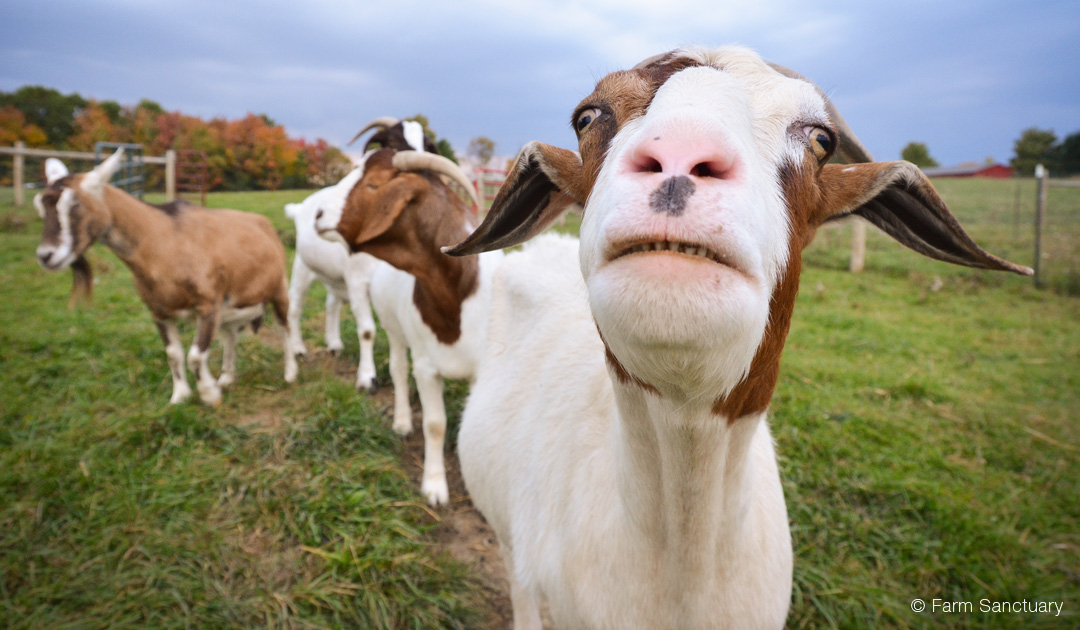
Is there a correlation between violence against animals and violence against humans?
Cruelty toward animals is a more significant condition of human numbness of conscience. And it applies not only to other animals but also to human animals.
When humans treat other animals with cruelty, it dehumanizes us, and we start rationalizing violence.
And once we start justifying unnecessary harm, we often rationalize it the same way we treat other human beings. Rationalizing violence dampens our empathy, compassion, and interest in our ability to look at others and understand how our actions may be causing them harm and suffering.
Slaughtering must affect the psychological well-being of a person. What makes people take up slaughtering as a profession?
When people kill other animals or dismiss the feelings and interests of other animals, they lose part of their humanity. There is this tendency to shut down and close your eyes to the reality of another creature’s life. People who work in slaughterhouses or factory farms are often disempowered and don’t know other options. And they become immersed in this world of exploitation and are also exploited as part of it.
When we accept bad things as normal, we justify and validate them through rationalizations. People who work in slaughterhouses, factory farms, or own these places rationalize these businesses, defend, validate, and legitimize them without looking at the harm they cause. Individuals who work in slaughterhouses and those profiting from them tend to create these rationalizations and belief systems to enable that system to continue.
Why do we rationalise and normalise the torture of animals in the name of tradition and culture? And why do we continue pharmaceutical and cosmetic testing on animals?
Often, we do things we have grown up doing. We are told that it’s [normalising the torture of animals] a cultural practice; it’s part of who we are as people. But just because we have done something for a long time doesn’t mean we should continue.
Cosmetic testing on animals has been normalised. A big industry has developed around cosmetics; they have animal breeding facilities and get government funding. Tax money is used to subsidise cruelty and violence; this is where bad becomes normal. Those profiting from animal cruelty want to maintain and rationalise cruelty to sell the idea to a larger audience. Rationalising is getting harder—when people see images of animals in laboratories or pictures of animals on factory farms and slaughterhouses, it’s an affront to our humanity. As a result, change is imminent.
Bullfighting, for example, is a brutal custom and must be challenged. Culture and identity around culture can be strong, and take time to change. For instance, bullfighting is a culture, but other things happen in Spain. In the US, we have cowboys, but other things happen. We need not hold onto all aspects of culture.
Change is constant. In the horse-and-buggy era, we didn’t have cars. And now we no longer have buggy whip manufacturers. Our businesses, economy, and culture change as times change. It’s important to step back, assess our actions, and ask ourselves whether they make sense. And if they don’t make sense, we must be open to change.
Change takes effort and time.
Absolutely. It [change] takes effort and time to put the infrastructure that supports the status quo, which is violent and makes cruelty convenient. There is growing momentum for alternatives, food or cosmetics, and products that haven’t come from animal harm.
What are Farm Sanctuary’s core values, and what can one expect to take away after a visit to one of your animal shelters?
One of the most significant impacts of Farm Sanctuary is to normalise the idea that farm animals are friends, not food. We have physical places, but we also have the example of living well and eating plants instead of animals.
Our community is welcoming. Whether people are vegan or not, the farm’s events welcome and accept people for who they are. People are encouraged to take positive steps towards living more compassionately, mindfully, and in a way that causes less harm to the planet and less damage to themselves—physically, emotionally, and spiritually.
Farm Sanctuary is a place of healing, transformation, and redemption. These are core human narratives throughout our history, and Farm Sanctuary ties into that core and encourages people to take steps in that direction.
VEGANISM
What does it mean to be vegan?
Being vegan is an aspiration to live as kindly as possible. Nobody is perfect, but not being perfect doesn’t mean we shouldn’t strive to do better.
One of our organisational values at Farm Sanctuary [Gene Baur’s shelter for rescued farm animals] is to speak to people where they are on their journeys. We encourage people, whether vegan or not, to visit Farm Sanctuary, start thinking about animal cruelty and environmental damage, and begin taking steps.
Even vegans can take measures to live more compassionately. For example, they can buy organic food from local farmers’ markets instead of conventionally grown, chemically laden foods. Mindfully improving our lives is a process, not an endpoint.
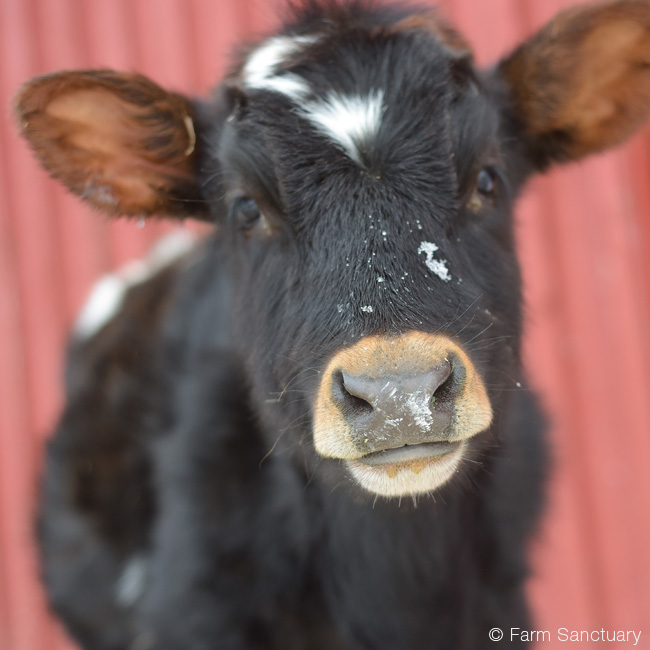
What was the trigger that led you to veganism?
I grew up in the Hollywood Hills, near Griffith Park, and saw how human activity harmed wildlife. I saw beautiful oak trees cut down to accommodate bigger houses. And I didn’t want to be a cog in a wheel for a system causing so much harm.
I learned how my grandmother raised veal calves, so I never ate veal. I then learned about the various violent aspects of animal agriculture through college. As I travelled around the country and met other vegetarians and activists, I felt that if I could live well without causing harm, why wouldn’t I? As I learned about animal cruelty and environmental damage, I knew that it was possible to live well by eating plants, not animal food. Turning vegan was an easy decision for me to make.
How did you source plant-based food when you turned vegan?
I became vegan in 1985 (and started Farm Sanctuary in 1986) and often went to food co-ops or health food stores. Today, you can get plant-based alternatives in mainstream grocery stores, so it’s a lot easier. And plant foods—fruits, vegetables, grains and beans—were always accessible. Back in the 80s, many people ate vegetarian or vegan food. Traditional ethnic food tends to be primarily plant-based because eating plants is efficient; it allows us to produce food without using many resources. Animal foods are recent creations, especially when you eat them the way you do now, in large quantities.
What challenges did you face as a vegan, and how did you stay the course?
The challenge was dealing with family and friends who knew me as a non-vegan. Somebody would make food for me, and I would say: “Thank you, but I don’t eat that [meat].” And people would feel I was emotionally rejecting them. So, the social aspects were more difficult. And sometimes, finding vegan food was tough when I was in the middle of nowhere.
How should individuals following a plant-based diet navigate environments that don’t support their values?
The challenge was dealing with family and friends who knew me as a non-vegan. Somebody would make food for me, and I would say: “Thank you, but I don’t eat that [meat].” And people would feel I was emotionally rejecting them. So, the social aspects were more difficult. And sometimes, finding vegan food was tough when I was in the middle of nowhere.
It’s about being honest, saying, “Thank you for this intention,” and then communicating, “Do you have anything other than cow’s milk?” Sometimes, talking in advance—in a respectful, honest and friendly way—is a good idea so people don’t feel judged; instead, they feel you respect them and appreciate their intention to welcome you in a customarily elevated way.
People are emotional and can react hostilely, rejecting your sentiments. You must be very careful you are not rejecting meat-eaters—you are rejecting cruelty. They [meat-eaters] are not bad people; they are part of this larger system that has made particular violence invisible. Just because meat-eaters are unaware and haven’t seen cruelty does not mean they want to cause harm. Many people are unwittingly supporting an abusive industry. And when confronted with the truth, meat-eaters feel bad about their participation because they feel cruel.
If you can provide information before a visit, a video on what happens on dairy farms, to allow a person time to process, it would let people see these issues with less resistance.
We want to empower people to live with kindness, align with their values and interests, and eat in a way that doesn’t make them sick and cause animals to suffer while destroying the planet.

Do you process the world around you differently, more kindly, as a result of following a plant-based diet?
I went vegan when I was 23, and now I am 55; most of my life experience has been as a plant-eater. I think when you are eating violence, it tends to affect you, physically but also emotionally. There is a dissonance between compassion and our actions. When people have that dissonance, they have some stress around it.
The alignment with compassion and eating a plant-based diet has helped bring me peace. But as a human being, I also have challenges regularly, and as I have gotten older, I have been able to see things more objectively.
What you eat is critically important, but your attitude is also crucial. It makes a big difference if you eat healthy food, are grateful, and practice healthy mental nourishment.
What is the role of a vegan advocate?
Vegan advocates play a role in enabling people to live healthier, more compassionate lives. It’s important to be welcoming yet firm about veganism and understand that change often happens over time. Some people are going to have more deep-seated attachments to their current practices. For others, there might be additional layers of attachment—they may be in the business of producing animal products, while others may be in the business of making pharmaceuticals that profit heavily from our animal abuse industries.
Some vegans are angry at the world, understandably. Delving into ugly things and dwelling in them affects us. We need to deal with the bad; we can’t ignore them. But it’s healthy to focus on the good things. We need to nourish ourselves physically as well as mentally.
Can other industries benefit from this change [veganism]?
Entrepreneurs need to recognize that the demand for plant-based food is an opportunity to create new plant-based businesses. Other services like coaching for plant-based eating, landscape gardening and green construction are increasing in demand. Even dairy farms are transitioning to plant-based milk.
In one of your tweets, you talk about dairy milk sales going down and plant-based milk going up.
Yes. Where cow’s milk consumption is concerned, there are some positive signs—cow’s milk consumption has been decreasing, and the consumption of plant-based milk has been increasing significantly. Major dairy companies are investing in plant-based milk. And major meat businesses are starting to invest in plant-based meat alternatives. Enterprises recognise that the future is more in a plant-based direction.
But you still have some companies locked into the old way of doing things. With an infrastructure in place, they have profited handsomely over the years from the existing business, so a change may seem frightening. They would rather hold on to what they have without recognising that there is enormous potential in a different approach to its future.
They say: “Monkey see, monkey do.”
I think it’s accurate to say: “People see, people do.”
The more positive things people do, the more others will recognise that and follow in their footsteps.
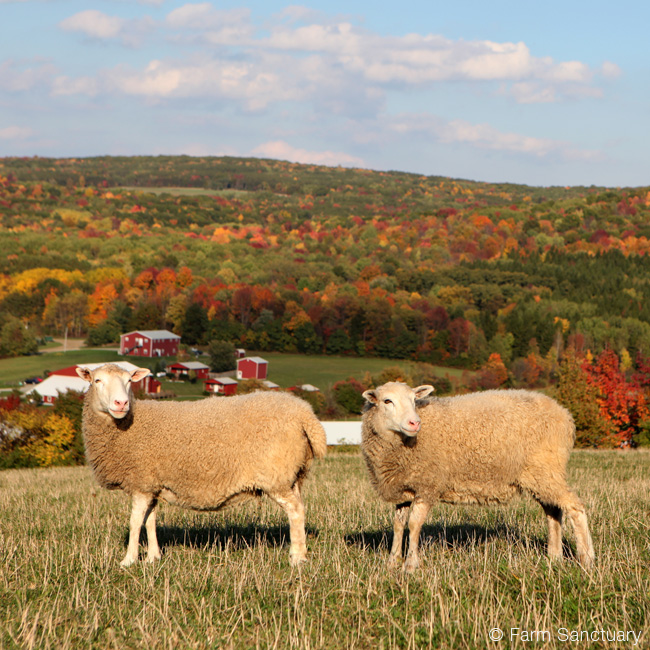
Does the distance between production (where cruelty resides) and consumption (where smartly packaged food sits on sterile shelves) contribute to consumers’ mindless choices? Or is consumption a combination of denial, habit and fear of moving away from the familiar?
The distance from brutal food production practices has negatively affected our food production. When people see these conditions, they are appalled by them and would rather not support them. But we are very adept at rationalizing behaviour we don’t feel good about. We have done many terrible things throughout human history, and we have come up with reasons or beliefs that enable us to live in violent and cruel ways.
Institutions like slavery were allowed because of specific rationalisations and beliefs formed around the institution of slavery. The same rationalisations exist regarding animal agriculture—certain beliefs have evolved around that institution.
Human beings are also creatures of habit and are afraid of change. We are bombarded with messages to eat animal products for protein or nutrition, which are myths. We do not need animal products; we can eat plant-based food very well. But not eating animals makes people worry about getting the nutrition they need.
And one of the biggest obstacles is the fear of being different because if everybody is doing something, you assume it’s normal. Human beings are social animals; when we eat differently, it separates us. In many cases, it’s hard for individuals to do something different.
Moreover, food comes with many attachments and emotional underpinnings. When somebody is raised eating animal foods—often the parents and the people feeding animal foods to their children or friends or members of the community or visitors—the message is: I care about you, so I am giving you the best. Meat historically has required a lot of resources to produce, so by providing somebody with meat, you are sending the message that they are important to you. Meat is recognised as highly regarded.
Meat is also linked to power. When a person is posed with a question about eating meat or not, they feel by not eating meat, they are losing power. We have a massive infrastructure in the U.S. to promote and enable this system. We have subsidies to allow the production of soy and feed crops so that when people purchase animal food at restaurants or grocery stores, they pay far lower than fair market value.
How does animal agriculture affect health negatively?
In some cases, people get sick from the toxins in the environment. The animal agriculture industry uses vast quantities of chemicals and antibiotics to keep the animals alive and grow them in these horrible, filthy, stressful conditions, as a result of which antibiotic-resistant bacteria is present not only in service water but also in groundwater.
The animal agriculture industry does so much harm, and people unwittingly support it—by eating meat, milk and eggs—without recognising that those food choices profoundly impact their health and the well-being of animals on the planet. And when people become ill after eating animal products, the industry externalises that cost. When the environment is destroyed and needs fixing, it’s an externalised cost. So, we have an infrastructure that makes it easy to eat animal foods even though they make us sick.
What does it take to break the cycle of cruelty?
We must reclaim and live in alignment with our humanity and values, regardless of how we grew up. Ultimately, we make food choices aligned with our interest in eating nourishing food that doesn’t make us sick, which is what we are currently doing.
We should also support a food system that doesn’t destroy the planet; animal agriculture does. If we stepped back and acted according to a few principles to live in alignment with our values and our interests, we would see a massive shift. But how do we get there from here?
We should also support a food system that doesn’t destroy the planet; animal agriculture does. If we stepped back and acted according to a few principles to live in alignment with our values and our interests, we would see a massive shift. But how do we get there from here?
Human beings want to belong to our community, and when it behaves in a way that is misaligned with our values and interests, it’s hard to step out of it. Change can happen incrementally. For example, doing a meatless Monday, where they don’t eat meat one day a week. And once they have started down that path, they recognise it’s not difficult. The small steps lead to more significant steps over time. And as more people eat plant foods instead of animal foods, the mindset will rub off on those around them.
As social animals, we influence those around us without even recognising we are doing it. And that’s how most of us grew up eating meat—because everybody around us was doing it. The more we see people follow plant-based living, the more awareness that these foods are accessible, tasty, and nutritious.
When individuals with health problems go on a plant-based diet, get off their medications and live healthier lives, they inspire their friends and community to do the same. Often, change happens when there is a disaster, like a heart attack.
Having positive vegan role models is essential. Vegan advocates who reach out to people and speak to them about where they are on their journeys play an important role—because people don’t want to be judged and feel like they are bad people.
You have spoken about an incident where, during a health check-up, the doctor, on learning your father had suffered a heart attack, wanted to put you on heart medication. What does mindset say about the medical system? And how has a plant-based diet enhanced your health?
Normalising sickness is an example of how terrible the medical system has become. Doctors are quick to prescribe heart medications, assuming that most people take them at a certain age. Eating plants instead of animals could prevent the need for medicines.
Fortunately, I have always had good health and eating plant foods has only contributed to my health. In the last few years, I have started participating in endurance events to demonstrate that plant foods can help you survive and help you thrive. I have done six marathons, a dozen triathlons, and an Ironman triathlon.
When do you train?
For the Ironman, I put in long training days on the weekends. Sometimes, on the road, I would wake up at three or four in the morning to go for a long run; that was difficult.
What does running mean to you?
The fact that I can run makes me feel very fortunate. I sometimes think about those who can’t run, including animals in cages which cannot move their whole lives. I am also grateful to have the ability to be physically out in beautiful places, run as I do, and process issues emotionally.
What is the nature of the issues you process while you are running?
Sometimes, I mull over challenges, trying to figure them out. Sometimes, I don’t think about anything. Sometimes, I listen to my body, the aches and pains. It’s this internal process of trying to run and focus on the positive.
Learn more about Gene Baur.
